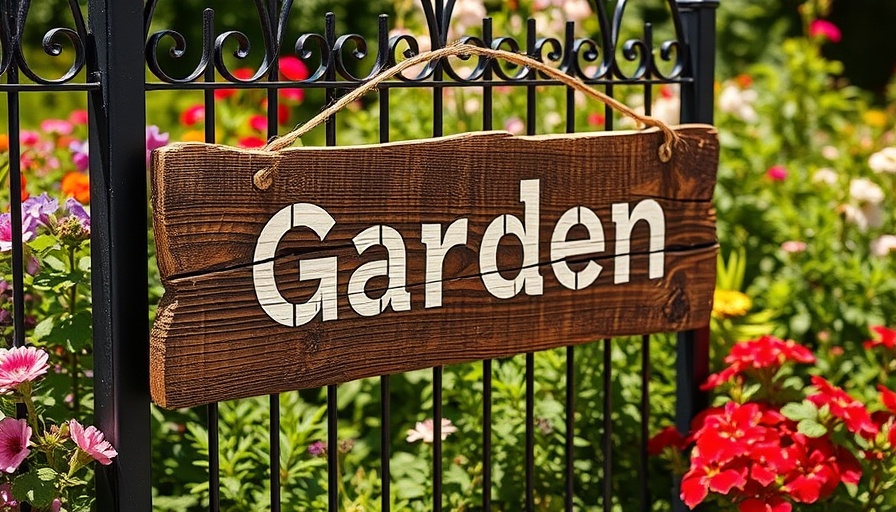
Revitalize Your Garden: Discover Stylish DIY Scrap Wood Projects
Are you ready to elevate your outdoor space? With a little creativity and some leftover wood, delightful DIY projects await you in the world of modern gardening. Scrap wood is not just an eyesore; it can be transformed into charming and functional garden decor that reflects your personality and enhances the beauty of your yard. Whether it’s building whimsical birdhouses or stylish vertical herb planters, let’s dive into various projects that can inspire you this weekend.
Upcycling Scrap Wood: The Eco-Friendly Choice
Embracing the trend of upcycling not only benefits your garden but is also a sustainable choice that reduces waste. According to recent studies, upcycling materials like wood keeps them out of landfills and promotes environmentally friendly practices.
By utilizing scrap wood, you engage in a greener gardening method while crafting stylish decor. From repurposing pallets into stunning planters to creating rustic furniture pieces, the potential is limitless. It’s about taking what you have and turning it into something special, all while minimizing your environmental impact.
Build a Vertical Herb Planter: A Space-Saving Wonder
First on our list is the vertical herb planter—a fantastic way to save space while adding a burst of green to your surroundings. This project is perfect for those who dream of fresh herbs at their fingertips. Here’s how you can grab some scrap wood and create a charming planter that showcases your gardening skills:
- Gather Your Materials: For a vertical planter, you’ll need scrap wood from pallets or fence boards, potting soil, and herb plants like basil or mint.
- Cut and Assemble: Measure the wood to create sturdy vertical and horizontal supports, then secure them together with screws.
- Create Shelves: Cut slots or shelves to hold your herb pots, ensuring they are spaced apart for sunlight and growth.
Remember, using untreated wood is vital for creating a safe environment for edible plants. By crafting your vertical herb planter, you produce an eco-friendly storage solution that is both functional and visually appealing.
Craft Colorful Birdhouses: A Charming Addition to Any Garden
Next up, let’s talk about birdhouses. Building colorful homes for birds can provide crucial shelter while adding a vibrant touch to your garden. Not only does this project attract charming wildlife to your space, but it also inspires creativity as you can paint and decorate your birdhouse in any style you like.
- Select Your Design: Choose a whimsical or classic birdhouse design that complements the aesthetics of your garden.
- Gather Tools and Materials: You’ll need scrap wood, wood glue, nails, a hammer, and outdoor paint for beautification.
- Construction: Assemble the pieces carefully, ensuring that there are enough entrances and ventilation for the birds.
Once the birdhouse is complete, hang it in your garden and enjoy the delight as birds flock to their new home. Your birdhouse will not only serve as a charming decoration but also as a sanctuary for local wildlife.
Design Rustic Garden Signs: Personalizing Your Space
Lastly, why not personalize your garden with rustic wooden signs? Using scrap wood, you can create delightful signs that label your herbs, flowers, or even provide whimsical quotes about gardening. This project is simple, rewarding, and can be tailored to reflect your personal style.
- Choose Your Message: Decide on what you wish to signal—whether it’s naming your plants or offering quirky garden tips.
- Prepare Your Wood: Sand down the scrap wood to create a smooth surface for painting.
- Paint and Decorate: Use weather-resistant paint or markers to display your message, making it colorful and visible.
These signs add a personal touch to your garden while ensuring visitors know what to admire. They are a fantastic way of integrating creativity into your outdoor living space.
Get Inspired: Your Outdoor Oasis Awaits
The charm of scrap wood projects lies in their creativity and functionality. Each project presents a unique opportunity to express yourself while embracing sustainability. As you embark on these DIY adventures, remember that each creation reflects your personal style and values.
For a more engaged outdoor experience, consider hosting a weekend workshop with friends to create various scrap wood projects together. There’s nothing quite like the joy of crafting with loved ones, combining talents, and sharing ideas over a weekend project!
So gather your scrap wood, unleash your creativity, and transform your outdoor space into a haven that radiates rustic charm and personality. Each project not only beautifies your garden but also brings a sense of accomplishment and pride as you watch your hard work flourish.
Call to Action: Start Your Scrap Wood Projects Today!
Why wait? Begin crafting your unique outdoor decor with these scrap wood ideas today! Transform your leftovers into stunning garden masterpieces that invite both beauty and functionality into your home.
 Add Row
Add Row  Add
Add 




Write A Comment